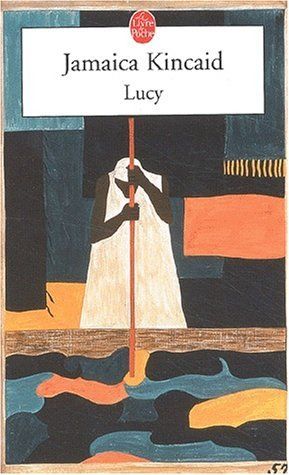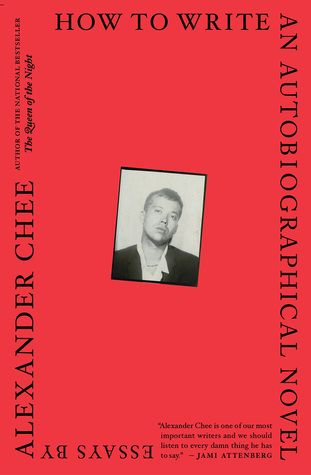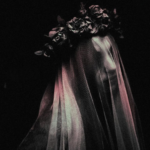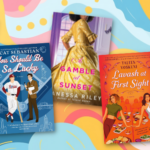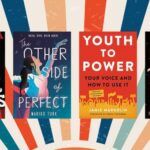
Better Know an Author: The Joys of Reading Author Catalogues in Publication Order
I love a checklist, and I love a reading project, so reading through an entire author’s catalog is basically irresistible to me. I have an entire tab on my reading spreadsheet with the complete works of authors I’d like to read in their entirety in my life — Mary Oliver, Toni Morrison, James Baldwin, and Dionne Brand, to name a few. Reading an author’s oeuvre is satisfying, however you do it, but this year, I’ve discovered something even more delicious: reading an author’s entire catalog in publication order.
Thanks to the We Read Jamaica Kincaid read-along hosted by Akilah White (@IfThisIsParadise on Instagram), I’ve embarked on the project of reading all of Kincaid’s works (to date) in order. The read-along is a two-year community project. We started in January with At the Bottom of the River, Kincaid’s debut, and though I’ve now fallen behind, the read-along will finish with See Now Then, her most recent work, in August 2024.
I’ve only read four of Kincaid’s works so far: At the Bottom of the River, Annie John, A Small Place, and Lucy. I’m currently in the middle of The Autobiography of My Mother. It’s hard to properly explain what this experience has been like. I knew almost nothing about Kincaid going in. I loved her debut, a book of lush, beautiful, often dreamlike short stories. Annie John, her first novel, is an entirely different book, and yet I found echoes of At the Bottom of the River in its pages. Then I picked up A Small Place and found all of Annie’s anger and defiance in Kincaid’s own blazing rage about the ways in which her home, Antigua, has been defined by colonization and extractive tourism.
By the time I got to Lucy, I had become familiar with Kincaid’s style — her incredible characterization, the fierce and complicated women in her books, her short and musical sentences. I thought I knew a little bit about her and her words, to be honest, and then Lucy blew everything I thought I knew right out of the water. Kincaid surprised me and surprised me and surprised me. It was like she gathered up all the threads she’d been weaving together in her hands, tugged, and let it all unravel.
I could easily write an entire essay about Kincaid and how impactful and emotional it’s been to read her books in the order she published them. But the thing is: I don’t think the author matters. Not interested in Kincaid? Well, you should be, she’s brilliant, but regardless, this is a translatable experience. Pick any author you love, living or dead. I promise that you will discover something new if you read their books in publication order. Doing so feels a bit like stepping into a time machine. You get to see how an author has changed over the years. You find patterns and then get to watch an artist break those patterns. You get to watch an author try new things or maybe write variations of the same thing over and over again in different ways. If the author you love writes nonfiction or contemporary fiction, you get to watch the times change in their books, and, if you’re lucky, you get to see how the times, perhaps, change them and their work. Maybe you witness an author try something that doesn’t work for you, and then, in a later book, try it again, and this time, it stuns you.
There is something incredibly intimate about this kind of reading. It’s a way to get to know an author — as much as you can ever know someone you’ve never actually met and don’t have a relationship with — but more than that, it’s a way to know and understand their work. A body of work has a life outside of the person who made it. This is what’s so exciting about reading in publication order. You get to watch that body of work in process as it’s being assembled.
I didn’t read Alexander Chee’s four books in publication order, but I’m tempted to reread them this way. His debut, Edinburgh, is an astonishing coming-of-age novel about childhood sexual abuse and the legacies of trauma. His second book, The Queen of the Night, is a sprawling historical epic about an opera singer. His third, How to Write an Autobiographical Novel, is an essay collection that includes reflections on the writing of both those books. I wonder how each of these books will sit differently with me when I read them in, shall we say, their birth order. What will I see that wasn’t clear to me the first time around?
Sometimes, I read a book and love it so much and so intensely that I immediately want to read everything else that author has written. This happened recently with Things I Have Withheld by Kai Miller. It happened a few years ago with The Wrong End of the Telescope by Rabih Alameddine and a few months ago with Cereus Blooms at Night by Shani Mootoo. It used to be that I’d haphazardly choose what to read next, maybe do some research into their work, and pick the one that sounded the most interesting to me. Now I add them to my list of author catalogues to tackle, and I go back to the beginning. I know it will take me years to get through all of these catalogues — I love some prolific authors — but the rewards are worth the wait.



